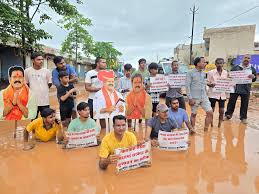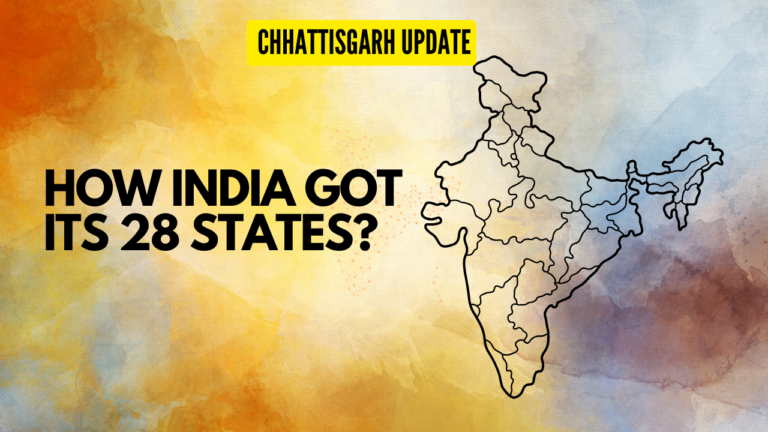Jashpur district, nestled in the heart of Chhattisgarh, is a land of enchanting natural beauty, historical significance, and cultural diversity. Located on the borders of Jharkhand and Odisha, Jashpur is a district known for its lush forests, majestic waterfalls, and a rich historical past.
In this article, we will embark on a journey to discover the wonders of Jashpur district, Chhattisgarh, by delving into its history, geography, climate, and demographics.
Historical Insights
Jashpur district, once a princely state during the British Raj, has a captivating history that dates back to the era of princely states in India. Jashpur town served as the capital of Jashpur State, one of the princely states of the Eastern States Agency. This region merged with independent India in 1948, and the last reigning monarch before Independence was Vijay Bhushan Singh Ju Deo.
Geographic Marvels
Diverse Landscape
Jashpur district boasts a diverse landscape that includes mountains, plateaus, and dense forests. The district spans approximately 150 kilometers from north to south and 85 kilometers from east to west, covering a total area of 6,205 square kilometers. It is situated between 22° 17′ and 23° 15′ North latitude and 83° 30′ and 84° 24′ East longitude.
Upper Ghat and Nichghat
The district can be divided into two distinct regions. The northern part, known as the Upper Ghat, is hilly and forested. It includes areas like Loroghat, Kastura, Narayanpur, and Bagicha, covering a plateau that sits about 1200 meters above sea level. The Upper Ghat is characterized by dense forests and is an extension plateau that spans 1384 square kilometers.
On the other hand, the southern part, called Nichghat, is relatively flat but has several large mountains. Jashpur Raigarh road features two notable ghats, Jhanda Ghat before Kansabel and Belaghat after Kansabel, making the region a treat for travelers seeking scenic beauty.
River Systems
Jashpur district is blessed with a network of rivers, mainly in the Mahanadi and Brahmani basins. Major rivers like Ib and its tributaries, including Dorki, Maini, Kokiya, Utai, Khadung, Girma, and Burhi, flow through this region. In the eastern part, rivers named Baki and Lava Nadi flow into the Brahmani basin. The Lower Ganges basin is primarily drained by Geor and Kanhar rivers. The irregular topography of the district results in a unique and irregular drainage pattern.
Connectivity and Towns
Jashpur district is well-connected through a network of roads and towns. Some of the main towns situated along the national highway (NH-78) include Lodam, Gholeng, Jashpur, Kunkuri, Bandarchuwan, Kansabel, Ludeg, and Pathalgaon. The road network from Jashpur headquarters connects to various destinations, including Ranchi, Ambikapur, and Raigarh, making it accessible for both residents and visitors.
Climate
The climate in Jashpur district varies from region to region. Kunkuri, located in Nichghat, experiences hot temperatures during the summer, while Pandrapat in Upper Ghat is the coldest region during the winter. The district’s climate is influenced by its proximity to forests and its location between the hills. Travelers often pass through Patthalgaon, situated between Raigarh and Ambikapur, to reach different destinations within the district.
Soil and Geology
Jashpur district exhibits a variety of soil types, including yellow soils (Ultisols) and red soils (Alfisols) developed over granitoids. Black soils (Inceptisols) are also present, formed over the Deccan traps in small patches.
The geological landscape primarily consists of granitoids, with a smaller portion in the northwestern part occupied by the Deccan Traps and Lametas. Laterite cover is widespread throughout the area, with varying thickness, making it a unique geological feature.
Demographics
Jashpur district is home to a diverse population with a rich cultural tapestry. According to the 2011 census, the district had a population of 851,669, with a literacy rate of 82%. The sex ratio stands at 1000 females for every 1004 males. Approximately 8.92% of the population resides in urban areas, while the majority lives in rural communities. Scheduled Castes and Scheduled Tribes constitute 5.73% and 62.28% of the population, respectively.
Languages
The linguistic diversity of Jashpur district is evident in its varied languages. According to the 2011 census, the major languages spoken in the district include Sadri (48.83%), Kurukh (27.57%), Chhattisgarhi (9.60%), Odia (5.09%), Hindi (4.98%), and Bhojpuri (1.36%). This linguistic diversity adds to the cultural richness of the region.
Conclusion
Jashpur district, Chhattisgarh, is a hidden gem waiting to be explored. Its natural wonders, historical legacy, and diverse culture make it a destination worth visiting. Whether you’re an adventure enthusiast, a history buff, or simply seeking a serene escape into nature, Jashpur district has something to offer for everyone.
In the upcoming articles, we will delve deeper into the district’s attractions, culture, and traditions, ensuring you have a comprehensive guide to this captivating region. Stay tuned for more insights into the beauty of Jashpur, Chhattisgarh!



